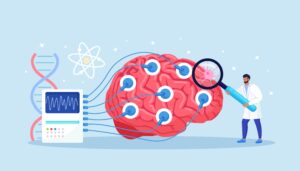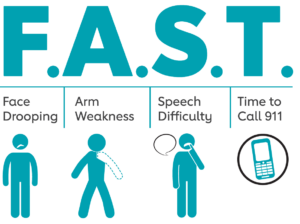Strokes: why prevention and action are the best medicine
This may seem obvious, but it’s true: No one wants to have a stroke. It’s the fourth leading cause of death in the U.S. and a significant cause of adult disability. That’s why taking steps to prevent a stroke is so important.
 A stroke happens when blood flow to the brain is cut off. This causes brain cells to die and is a medical emergency requiring immediate treatment.
A stroke happens when blood flow to the brain is cut off. This causes brain cells to die and is a medical emergency requiring immediate treatment.
If you or anyone you know experiences one or more of the following symptoms, call 911 and ask for Riverside right away:
- Sudden severe headache with no known cause.
- Sudden numbness or weakness of the face, arm or leg, especially on one side of the body.
- Sudden confusion, trouble talking or understanding speech.
- Sudden trouble seeing in one or both eyes.
- Sudden dizziness, trouble walking, or loss of balance or coordination
If you suspect you or someone else is having a stroke, think F.A.S.T.
 Why F.A.S.T? Because the word is an acronym for an easy way to remember some of the signs and symptoms of stroke and when to get medical help:
Why F.A.S.T? Because the word is an acronym for an easy way to remember some of the signs and symptoms of stroke and when to get medical help:
- Face drooping.
- Arm weakness.
- Speech difficulty.
- Time to call 911.
F.A.S.T. also reminds you that stroke is an emergency and you need to get help quickly.
Why do you need help quickly?
As soon as blood flow is blocked, cells in the brain start to die because they aren’t getting the oxygen and blood they need to survive. Dead brain cells can’t be brought back to life.
Damage from the most common type of stroke can often be stopped by a medication called Alteplase IV r-tPA, which can bust open a clot. But it must be given within a three-hour window. To leave time for evaluation and diagnosis, someone having a stroke must get to a hospital within 60 minutes of when they first started having symptoms.
An emerging field that holds great potential to improve stroke outcomes is now being used by Riverside. Riverside’s ER is now using Viz.ai software to better diagnose stroke upon a patient’s arrival in the ER. The platform allows multiple providers to review CT scans in real-time for more accurate diagnoses, personalized treatments, and more efficient use of resources. Before using Viz.ai software, patients with strokes would undergo CT scans and wait for providers to review in a chain of approvals from radiologists to neurologists to ED physicians.
With the new Viz.ai software, the Riverside ER, the only ER in the region using this software, can now diagnose patients with strokes much quicker, allowing for patients to remain in the community without the need for lost time and costly transportation to another care facility.
Keeping your heart and blood vessels healthy is very important if you want to lower your risk of a stroke. Many heart diseases, such as atrial fibrillation, increase your stroke risk.
Tips for avoiding a stroke
Some things are out of your control when it comes to avoiding a stroke, such as your age or family history of stroke. But the good news is that there are at least five ways to help lower your chance of having a stroke:
- Eat a healthy diet. Fill your plate with plenty of fresh fruits and vegetables. Also, choose foods high in fiber and low in saturated fats, trans fat and cholesterol. Avoid excess salt.
- Watch your weight. Too many pounds raise your risk of a stroke. Aim to keep your body mass index (BMI) in a healthy range. Your doctor can tell you how much you should weigh.
- Exercise on a regular basis. Exercising is one of the best ways to protect against a stroke. It lowers cholesterol and blood pressure levels and helps you maintain a healthy weight.
- If you smoke, it’s time to quit. Smoking increases the risk of stroke in numerous ways. Your doctor can help you stop.
- Manage your blood pressure. High blood pressure is the leading risk factor for stroke. Following tips one through four above can help keep your blood pressure under control. So can taking medicine to lower your pressure, if needed.
To learn more about strokes and how you can better prevent them, visit riversidehealthcare.org.
Sources: National Center for Chronic Disease Prevention and Health Promotion; National Institute of Neurological Disorders and Stroke
